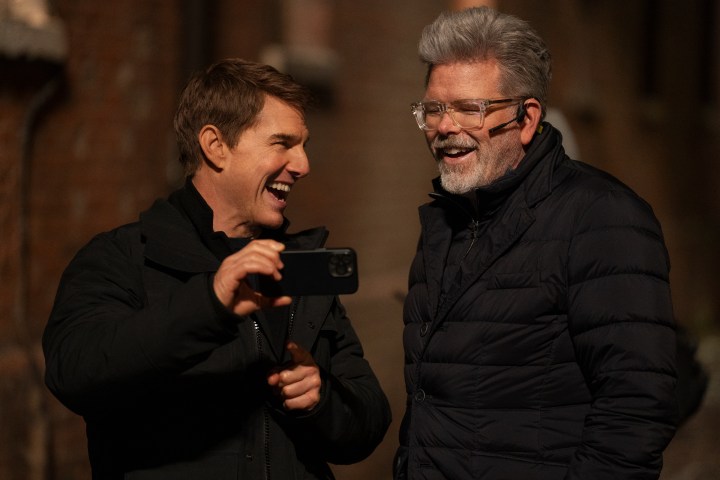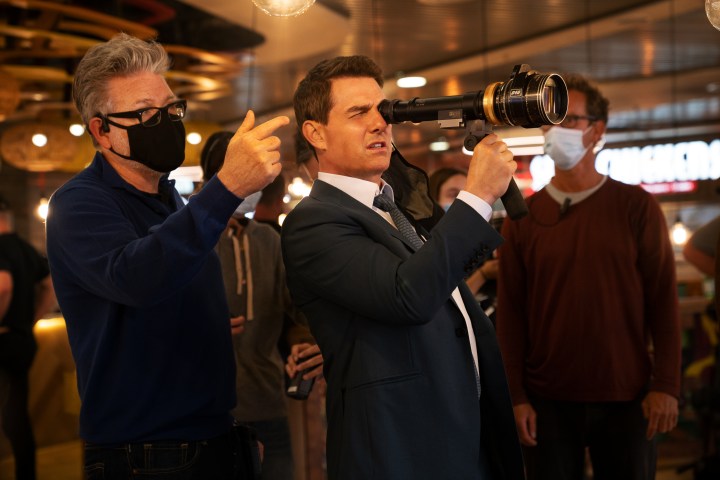
There aren’t many actors who are more powerful or beloved in Hollywood right now than Tom Cruise. Thanks to the popularity of films like Mission: Impossible — Fallout and Top Gun: Maverick, Cruise has become a semi-self-designated champion of cinema itself. In an era when it feels like Hollywood is in dire need of movie stars, Cruise is, notably, one of the few actors who is capable of bringing moviegoers out in droves to see his films in theaters.
Cruise has certainly earned his status as an industry titan. Most of the acclaimed films he’s made over the past 10 years or so have relied heavily on both his innate star power and his willingness to try the kind of practical stunts that have previously turned performers like Jackie Chan and Buster Keaton into legends. When audiences go to see one of his movies, they know that, at the very least, they’re going to get a film that was made with the pure intent of entertaining them. That’s, frankly, a hard thing to come by these days.
With a little help from a usual suspect
However, as impressive as Cruise’s late-career work has been, it’s worth noting that his recent renaissance cannot be completely attributed to him. The actor has risen back up through the Hollywood ranks not only because of his own charisma and daredevil-like drive but also because of his extremely rewarding partnership with writer-director Christopher McQuarrie.

Tom Cruise and Christopher McQuarrie have been working together ever since the former starred in 2008’s Valkyrie, which McQuarrie wrote. Four years after that film, the two men worked together for the first time as an actor and director on the 2012 action flick, Jack Reacher. While that movie doesn’t work quite as well as some would have liked, McQuarrie has nonetheless gone on to be involved in nearly every critically acclaimed and beloved movie that Cruise has made over the past 12 years.
That includes 2011’s Mission: Impossible — Ghost Protocol, the film that resurrected both the Mission: Impossible franchise and began Cruise’s rebrand as a thrill-seeking-movie-star-with-a-death-wish. McQuarrie, notably, has no credits on Ghost Protocol, but it’s been said that the uncredited work he did on that film helped turn it into the well-rounded blockbuster it ultimately became. Even Ghost Protocol director Brad Bird has gone out of his way over the years to acknowledge McQuarrie’s work on the film.
A few years later, McQuarrie was brought on to perform last-minute rewrites on 2014’s Edge of Tomorrow, which ranks high among Cruise’s best action movies. He was then hired to write and direct 2015’s Mission: Impossible — Rogue Nation, a job he’s since reprised for both 2018’s Mission: Impossible — Fallout and this year’s Mission: Impossible — Dead Reckoning Part One, all of which are considered some of the best action movies that Hollywood has ever produced. Along the way, McQuarrie also performed rewrites on the script for Top Gun: Maverick and helped produce the hit 2022 film.
McQuarrie has, in other words, become Cruise’s biggest and most trusted collaborator. While not every film he’s worked on with Cruise has been a success, either (see: The Mummy), it’s clear that the latter has a deep faith in not only McQuarrie’s skills but also his artistic vision. And when you look at the Cruise-led films that McQuarrie has directed, it’s not hard to see why the two have hit it off so well.
Is Christopher McQuarrie the MVP of the Mission: Impossible franchise?

McQuarrie’s Mission: Impossible movies don’t just feature some of the most awe-inspiring practical stunts in recent movie history — they also boast a stunning level of narrative and visual craftsmanship. During their shared commentary track for Mission: Impossible — Fallout, Cruise repeatedly refers to McQuarrie’s work as “elegant,” which seems as apt a description of his style as any other. In Fallout, Rogue Nation, and Dead Reckoning Part One, McQuarrie never lets you forget that he’s in control. Even when the wheels are literally coming off on-screen, there’s never a sense in his Mission: Impossible movies that they’re becoming too chaotic or uncontrolled for their own good.
That’s an exceptionally hard thing to pull off, especially in films that rely so heavily on the explosive chaos of their action sequences. But at no point in McQuarrie’s M:I efforts does it feel like their action sequences have taken priority over their characters. Look no further than the prolonged Paris chase in Mission: Impossible — Fallout, which is propelled at every turn by difficult decisions made by Cruise’s Ethan Hunt, for proof of that.
In addition to his near-unrivaled visual eye, McQuarrie has an innate understanding of how to balance action and character, spectacle and emotion. That’s apparent not only in his M:I films, but also in Top Gun: Maverick and Edge of Tomorrow, which are, by all accounts, the other two post-Valkyrie Cruise movies he’s had the most direct involvement in. Throw in his clear love of Alfred Hitchcock, Buster Keaton, Harold Lloyd, and John Frankenheimer, and you’ve got someone who not only has a steady, reliable vision, but whose tastes align with some of the cinematic legends that Cruise has spent a huge portion of his career trying to emulate.
A fruitful partnership

It’s clear that Tom Cruise and Christopher McQuarrie’s creative relationship is very much a partnership. It’s not a one-way street, which means that neither deserves all the credit for the other’s recent successes. That said, McQuarrie’s fingerprints have, in one way or another, been apparent in all of Cruise’s best late-career movies.
He’s a filmmaker who is uniquely well-equipped to make the kind of films that Cruise wants to right now, and in the Edge of Tomorrow and Top Gun star, McQuarrie has found someone who has the power, resources, and desire to ensure that those movies get brought to life on-screen. Talk about a win-win.
Mission: Impossible: Dead Reckoning — Part One is now playing in theaters.
Editors’ Recommendations
Credit: Source link


Comments are closed.